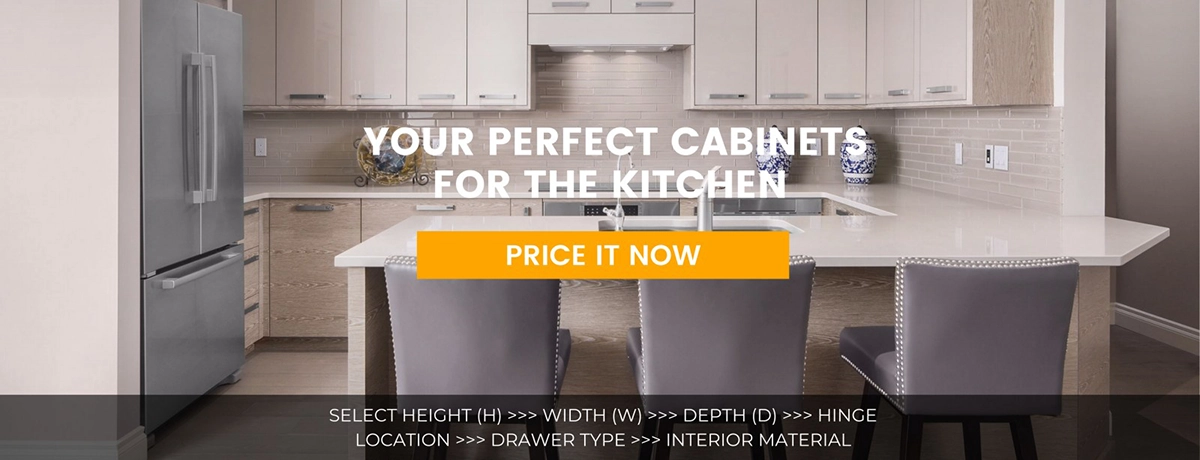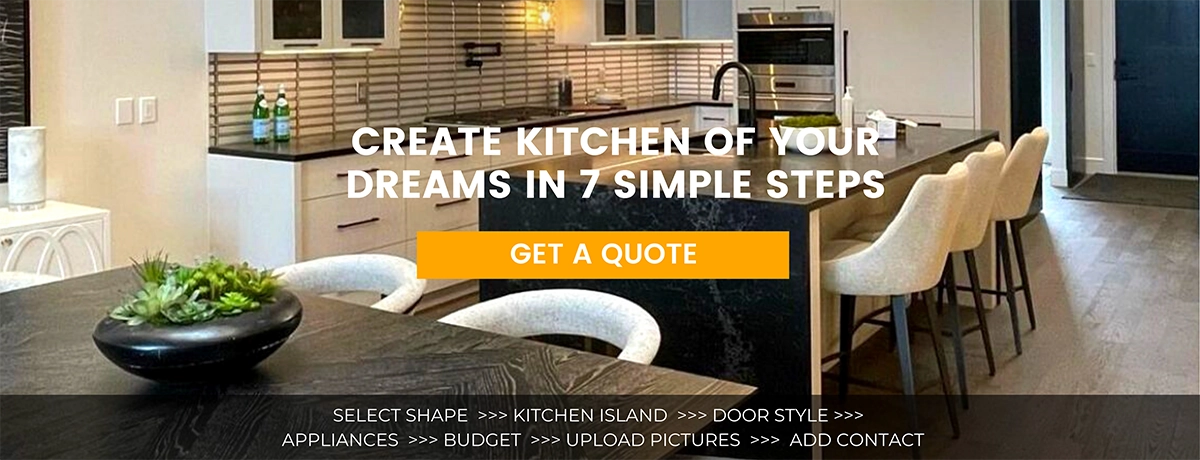A few important things about base kitchen cabinets before starting renovation
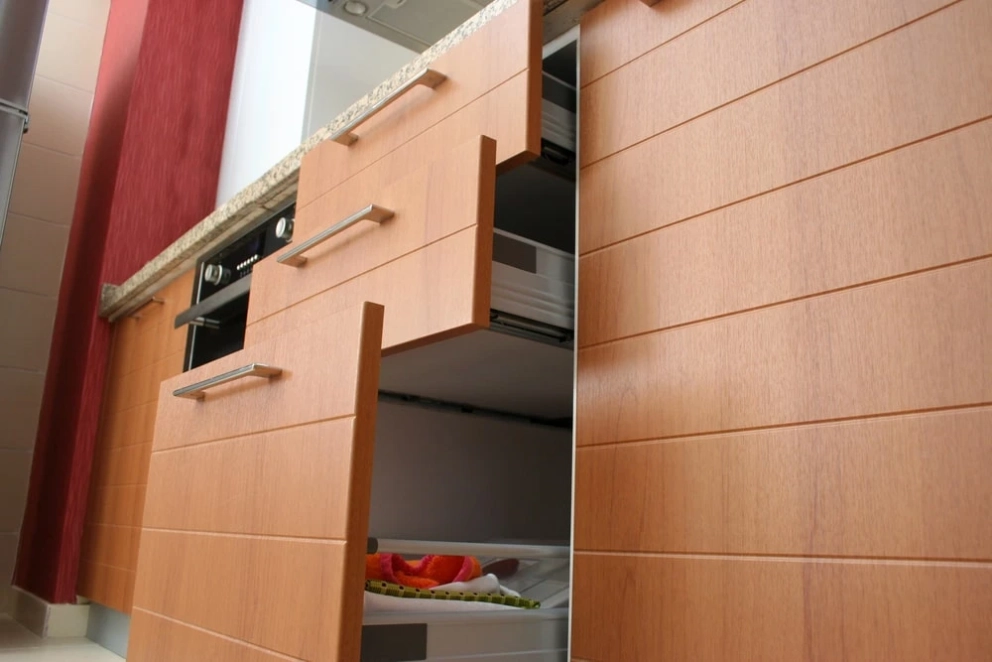
Kitchen base cabinets are literally the foundation of your kitchen. Their size, configuration and proper installation will determine the functionality of the whole kitchen. Just think about it - there can be kitchens without upper cabinets, but you will never find a no-floor cabinet kitchen anywhere. Lower cabinets serve as the main storage units in the kitchen, allowing you to store heavy appliances and bulky utensils. There are essential components such as the cooktop and sink built into the kitchen floor cabinets.
Kitchen base cabinets in Canada can vary in types and styles - you may choose ones with sliding shelves or spinning lazy Susans to accommodate your cooking routine. You can go for bottom kitchen cupboards with two or three drawers, and use them to build a kitchen island. They are core elements for useful kitchen layouts, so floor kitchen cabinets must be durable and properly mounted.
Today’s Cut2Size post is dedicated to bottom kitchen cabinets and cupboards as a vital part of your cooking space. You will learn about standard sizes for floor cupboards and the reasons behind them. Also, discover the secrets that can be hidden in a kickboard and learn how to best design a kitchen with bottom cupboards.
The right base kitchen cabinet’s height
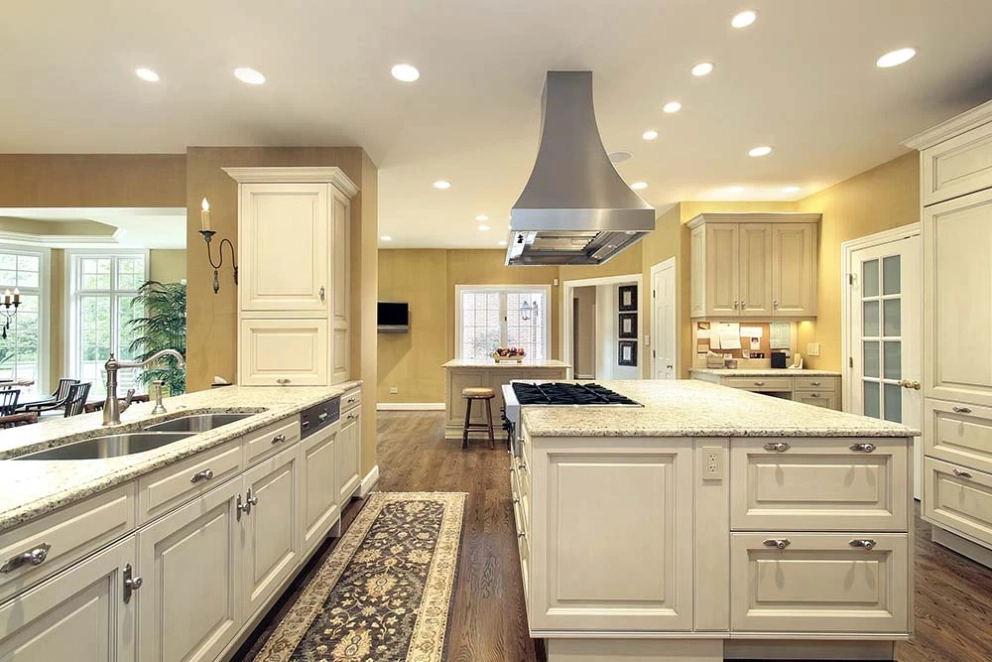
When it comes to kitchen renovations, figuring out the base cabinets' height is a bit like Goldilocks trying to find that perfect fit - except instead of too hot or too cold, it's about hitting that just-right height. So, let's spill the beans on the height of base cabinets and what you need to know before you start measuring up your kitchen space.
How tall are base cabinets?
You’re eyeing your kitchen space and thinking about how high base cabinets are? It's commonly observed that the standard height for base cabinets typically stands between 34.5 to 36 inches in height, aligning harmoniously with a standard countertop level. This range offers a seamless workflow and ergonomic setup in your kitchen. However, variations may exist in the standard height of bottom kitchen cabinets due to manufacturer specifications or customized designs.
Why choose the standard height of base kitchen cabinets?
Now, let's zoom in on why this height thing matters. You see, getting the right height of your base cabinets ensures your countertop fits snugly, making meal preps and cooking feel like a breeze. Adapting the base cabinets to suit the person using the cooking area is important. This adjustment ensures the countertop aligns perfectly, facilitating effortless meal preparation and cooking. Moreover, it maintains a cohesive aesthetic within the kitchen layout. Imagine countertops either towering over or falling short - neither would complement the space well, right?
Don’t forget to create wriggle room
Before you get too comfy with these standard measurements of the height of kitchen base cabinets, there's a trick up their sleeve. You might stumble upon these cabinets ranging from 30 inches to 42 inches in height. Yep, this height of bottom kitchen cabinets has some flexibility! This variability caters to different needs and styles. Do you want a bit of extra storage space or have a specific design in mind? Taller or shorter cabinets might be the way to go.
Alright, a quick recap
In summary, the standard height of base kitchen cabinets lingers around 34.5 to 36 inches for that ideal countertop partnership. Nevertheless, there's room for customization within the 30 to 42-inch range, allowing for a tailored appearance or extra storage. Hence, precision in measurement ensures the base cabinets align perfectly with the desired kitchen dynamics, especially in catering to the cook's height.
Base cabinets and countertop
We now know that base cabinets are those cabinets that are situated on our kitchen floors. These cabinets usually support countertops. Understanding the standard size of base cabinets can make or break your kitchen renovation game. In this section, we’ll talk about base cabinets with a countertop.
When redesigning or renovating a kitchen that involves adding kitchen base cabinets with a countertop, you can consider many things such as materiality, style, colour, and durability.
Base cabinets for kitchen island
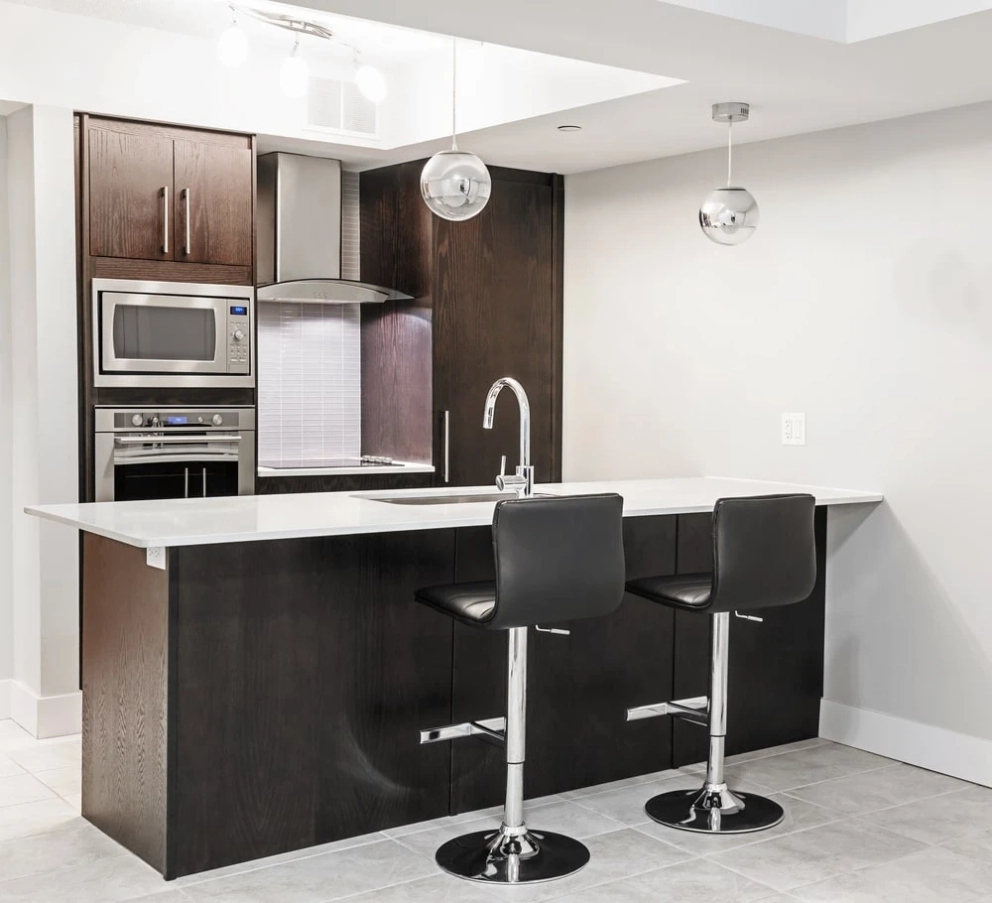
Let's talk shop on how to make a kitchen island out of base cabinets. First off, gather flat-packed base cabinets that match your vibe and space needs. Now, arrange them in the layout you fancy for your island. Lock them in place and make sure they're levelled up - no wobbly islands allowed! Next, slap on a countertop that complements your kitchen's aesthetic. Whether it's wood, granite, or something else, this top layer ties the whole island look together. Add a splash of personal flair with some cool accessories or a couple of stools, and voila! You've just DIY-ed your very own kitchen island out of trusty base cabinets.
Creating a kitchen island out of base cabinets is like adding a cherry on top of your kitchen design game! These kitchen island base cabinets come in various sizes and styles, offering a perfect base for crafting your dream island. Now, about that standard height of base cabinets - typically around 34.5 to 36 inches - it's crucial when making an island out of these cabinets. This standard height ensures your island aligns seamlessly with your existing countertop space, giving you a smooth, cohesive look that's as stylish as it is functional.
Base cabinet installation and appliance attaching
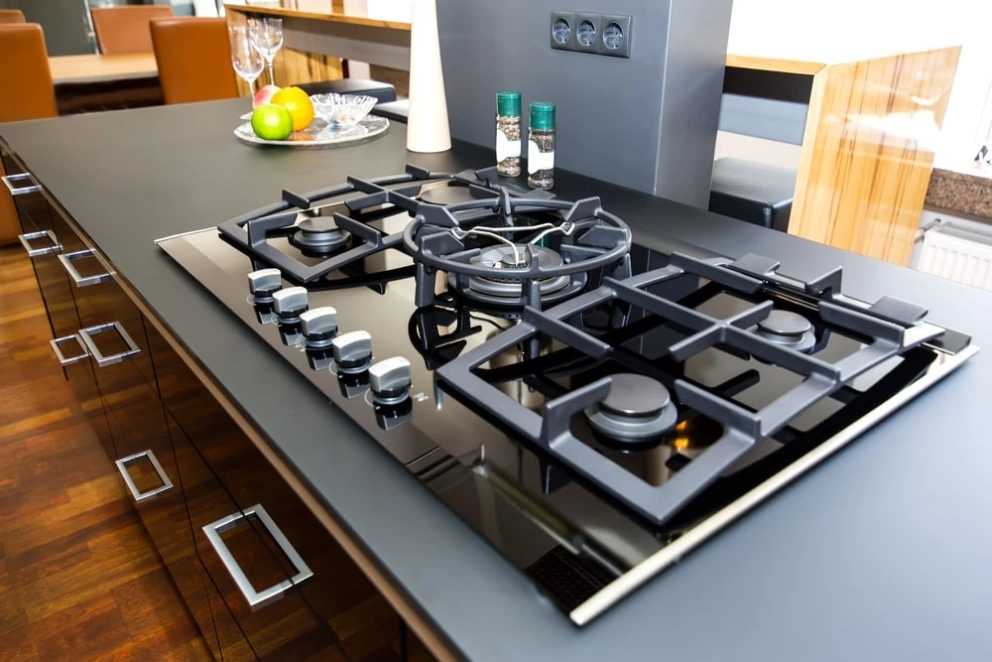
Installing base kitchen cabinets is a crucial phase in setting up a functional kitchen. You need to have a detailed plan of your base cabinets for the kitchen to ensure they will fit accurately into your kitchen’s allocated space. So, you're ready to revamp your kitchen and the base cabinets are on your radar. Here's what you need to know:
- Understanding your space. Grab that tape measure! Take precise measurements of your kitchen space where you will be installing the bottom kitchen cabinets. Consider the width, depth, and height available. Knowing these measurements helps you find the right cabinet pieces. Create some space to work. Clear out the area where the kitchen base cabinets will be installed. It's like making room for a new guest in your home - give it a clean and welcoming space.
- Choosing the right base kitchen cabinets in Canada. Base cabinets come in various styles and sizes. Standard depths are around 24 inches, but there's room for custom sizes. Take a peek at different kitchen floor cupboard styles to find what vibes best with your kitchen vision. Explore materials and finishes. From wood to laminate, there's a buffet of choices. Consider durability, aesthetics, and, of course, your budget.
- Preparing for installation. You don’t need to do it all by yourself especially if you have no idea how to install base cabinets. Consider hiring a professional for installation. Doing this will speed up your renovation progress and there will be less costly mistakes. If you're attaching appliances to cabinets, research their requirements. Some appliances might need specific cabinet configurations. Don’t buy the appliance right away. Consult with your designer to know about the types of appliances and other items that you can store in your base cabinets. Appliance installation might require specific tools or expertise. If unsure, consult installation manuals or consider hiring a professional to ensure proper and safe installation of base cabinets and appliances in your kitchen.
- Budgeting wisely. Set a budget! Cabinets can take up a chunk of your renovation funds. You want to stay within limits but still get what you need. To avoid going over budget assess your kitchen requirements. What are some features you want to have in your cabinets? Do you plan to have a corner base cabinet? Do you love the idea of pull-out trash bins? What about choosing drawers and drawer organizers? Make a list of the things that you want so you can better assess the cost and separate the essential stuff from minor unnecessary things that you might want but don’t actually need. Shop around for prices. You might find similar cabinets at Cut2Size for better prices and options than in various offline shops. Exploring different cabinet suppliers allows you to weigh the value against the cost. It's about finding that sweet spot where the quality of the cabinets aligns with your vision for the kitchen while being mindful of your budget constraints. It's like hunting for the best deals - you want quality without breaking the bank.
- Visualizing the end goal. Imagine standing in the heart of your home, envisioning the layout, colours, and little details that make you smile. It's about seeing the flow of the space, where the cabinets sit, how the countertops complement the walls, and even where the light fixtures hang. Sketching it out - whether it's a rough doodle or a detailed plan - helps solidify those ideas, like drawing a map
Base cabinet width and depth options
Base cabinets are the backbone of kitchen storage, providing the groundwork for your countertops, sinks, and a myriad of storage options. The size of base cabinets comes in various widths, typically ranging from 12-inch pull-out base cabinets to 32-inch two-door base cabinets, offering versatility in kitchen design. The width of base kitchen cabinets is one important consideration because it plays a crucial role in determining the overall functionality and aesthetics of your kitchen space.
Beyond width, the depth of the cabinets also significantly impacts the usability and aesthetics of your kitchen. The common bottom cabinet depth options are:
- The 24-inch depth - striking a balance. The standard depth for base cabinets is typically 24 inches, designed to provide sufficient storage and accommodate standard countertops, which extend slightly beyond the cabinet face. These cabinets provide sufficient room for storing pots, pans, and larger kitchen items, ensuring easy access without being too intrusive in smaller kitchen layouts. Pair these cabinets with standard 25-inch countertops, and you've got a practical and functional setup that doesn't compromise on storage.
- The 18-inch depth - space-saving marvels. Typically not standard for base cabinets in residential kitchens. However, they might be ideal for compact kitchens or areas where maximizing every inch of space is crucial. Though slightly shallower, these cabinets still offer ample storage for kitchen essentials. They're perfect for organizing dishes, utensils, or smaller appliances, providing a streamlined look while optimizing storage in tighter kitchen layouts.
- The 15-inch depth - niche solutions. Rare for base cabinets. This depth is more common for wall cabinets or specific design needs. It can be used in unique layouts but is not a standard base cabinet depth. These cabinets can work for ultra-compact spaces or specialized storage requirements. While they might limit storage capacity compared to their deeper counterparts, they excel in tight spots, and corners, or as supplementary storage options in multifunctional kitchens.
Whether you opt for the wide cupboards for storage or space-saving options, understanding these options empowers you to create a kitchen that not only looks stunning but also works seamlessly to suit your lifestyle and needs.
Base cabinet legs and kickboards

The legs of the lower kitchen cabinets help to correct minor deviations in height and level the cabinet so that it does not wobble. The integration of base cabinet legs and kickboards plays a crucial yet often overlooked role in both the functionality and aesthetics of a kitchen space. Let's delve into these components to understand their significance and the vital functions they serve.
Legs functionality and purpose:
- Height adjustment: The adjustable legs allow for precise levelling of the cabinets, compensating for uneven floors, ensuring stability, and creating a uniform appearance.
- Accessibility: Elevating the cabinets off the floor makes it easier to clean the kitchen area, preventing dirt and debris from accumulating under the cabinets.
- Moisture protection: By keeping the cabinets off the floor, base cabinet legs help protect the cabinetry from potential water damage or spills.
- Air circulation: Adequate space beneath the cabinets allows for better air circulation, preventing potential issues like mould or mildew growth.
Complementing the base cabinet legs are kickboards, also known as toe kicks, which are the bottom trim for base cabinets. These are the horizontal panels installed at the base of cabinets, bridging the gap between the floor and the bottom of the cabinets. The kickboard's significance goes beyond mere visual appeal, encompassing several functional aspects vital to a well-designed kitchen.
Kickboard functionality and purpose:
- Ergonomics: The space beneath the cabinets created by kickboards allows for a comfortable standing position when working at countertops, reducing strain on the legs and back.
- Concealing utilities: Kickboards cleverly hide wiring, plumbing, and other utilities that may run along the base of the cabinets, maintaining a clean and organized look in the kitchen.
- Aesthetic enhancement: While serving functional purposes, kickboards contribute to the overall aesthetics of the kitchen, providing a finished appearance to the cabinetry.
- Protection against damage: These panels act as a barrier, safeguarding the cabinets from accidental kicks or impacts, and preserving their structural integrity.
Cabinet toe kick dimensions:
When considering base cabinet legs and kickboards, understanding standard dimensions is crucial for a harmonious design. The standard toe kick height for kitchen cabinets is typically around 3 to 4 inches, allowing ample space for comfortable use while ensuring a seamless visual transition between cabinets and the floor.
The integration of base cabinet legs and kickboards may seem like minor details, but their significance cannot be overstated. From providing a polished aesthetic to enhancing functionality and protecting cabinets, these components are indispensable elements that contribute to a well-thought-out and efficient kitchen space.
Next time you step into a kitchen, take a moment to appreciate the base cabinet trim and the subtle yet impactful presence of kickboards, for they are the silent heroes that elevate both the functionality and beauty of this essential space.
Base kitchen cabinet design
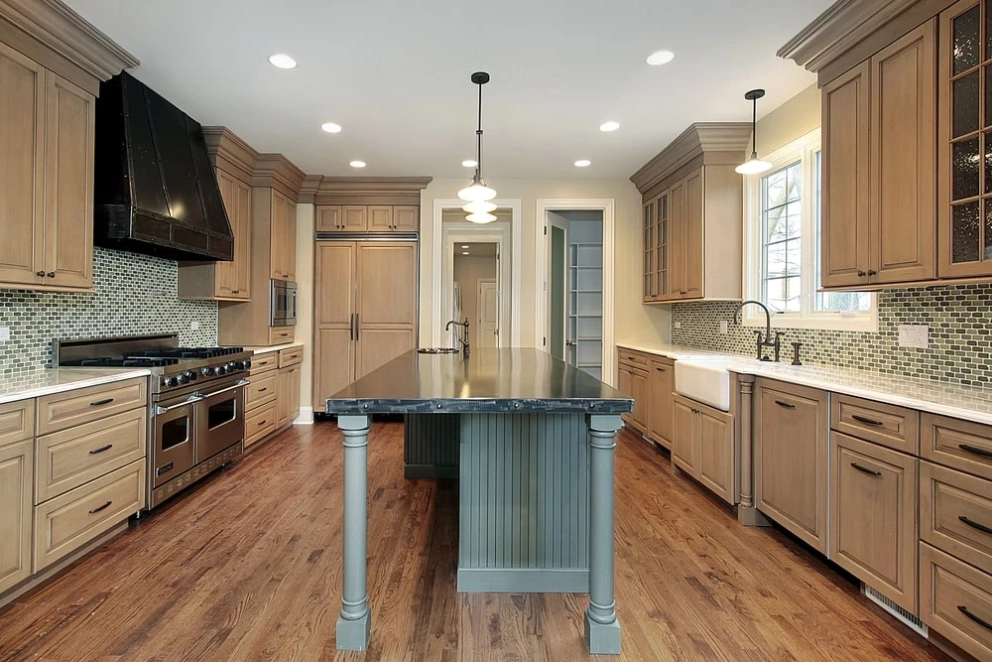
When it comes to styling kitchen base cabinets, the options are as diverse as they come. Whether you're exploring cheap options or aiming for luxury, there's a world of design waiting to be explored.
- Unfinished base cabinets. Let's start with unfinished base cabinets in Canada - these gems are like a blank canvas waiting for your creative touch. They offer versatility, allowing you to personalize your kitchen's look. You can opt for unfinished base cabinets with drawers, a popular choice for combining storage convenience with customization. In Canada, the availability of unfinished base cabinets offers a fantastic opportunity to tailor your kitchen's style while keeping within budget constraints.
- Budget-friendly design options. Speaking of budget-friendly options, cheap base cabinets made from MDF with melamine finish are a go-to for many. They provide a cost-effective solution without compromising quality.
- Pops of colors. Now, let's talk about colours! White base cabinets exude a timeless elegance, creating a clean and spacious feel. On the other hand, black base cabinets offer a bold and modern look, injecting a sense of sophistication into your kitchen design. Feeling adventurous? Imagine painted bottom kitchen cabinets contrasting with white top cabinets. Two-tone top and bottom cabinets are a growing trend. And how about blue base kitchen cabinets? They bring a splash of personality, adding vibrancy and uniqueness to your space.
- Wood design. For those who value durability and a natural look, plywood base cabinets with veneer are an excellent choice. They offer sturdiness and a rustic charm that complements various kitchen styles seamlessly.
In styling kitchen base cabinets, remember: it's all about marrying functionality with flair. Whether it's the budget-friendly options, contrasting colours, or the allure of different finishes, the key is to blend your personal taste with practicality to create a kitchen that's both visually appealing and highly functional.
Optimizing storage: base cabinets, drawers, and trays
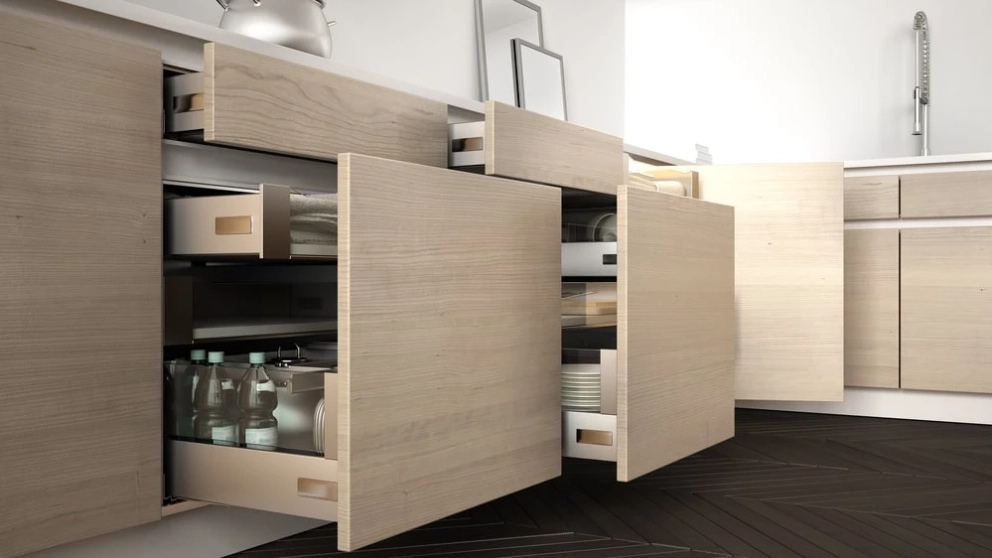
Making the most out of your base cabinets is key to a functional and efficient kitchen setup - it's like the secret sauce for a smooth cooking experience! We've got your back with some nifty tips on optimizing that storage because let's be real, a well-organized cabinet can make or break the whole kitchen vibe. Here are a few base cabinet organization tricks:
| Hacks | Details |
| Vertical storage magic | Install adjustable shelves or stackable organizers to maximize vertical space. |
| Corral small items | Introduce pull-out baskets or bins to contain smaller items like spices, sauce packets, or condiments. |
| Spin it right | Incorporate lazy Susans or spinning trays for easy access to items tucked in the back. |
| Utilize cabinet doors | Hang hooks or racks on the inside of doors to store lids, cutting boards, or frequently used utensils. |
Here’s how to make the most of your base cabinets with drawers:
- Dividers - Use drawer dividers or inserts to maintain order for utensils, cutlery, and small gadgets. You can integrate different types of bottom cabinets with drawers. Having ones are great for small kitchens because you don’t need to open doors to access your storage.
- Open shelving bottom cabinets can be a great alternative for shallow space, but they never replace base drawer cabinets and deep drawers for pots.
- Adjustable organizers - Employ organizers with customizable compartments on your kitchen base cabinets with drawers for versatile storage options. Base cabinet drawers are typically spacious. But with a lot of space, your stuff can easily get disorganized from time to time. Putting adjustable organizers on your drawer base cabinets will make it easier for you to find utensils or kitchen items that you need to use at once.
- Tackle deep drawer space - Install peg systems or custom dividers for upright storage of pots, pans, and baking sheets.
- Creative solutions - Explore magnetic strips to hold knives or metal spice jars, saving precious counter space.
And a few more options to utilize trays:
- Slide-out trays - Utilize slide-out trays in base cabinets for easy access to larger cookware items.
- Tiered tray organizers - Implement tiered organizers to stack dishes or lids efficiently.
- Innovative storage - Consider using unused spaces effectively; cabinet doors can host hooks or racks for lids and cutting boards.
How to organize the bottom kitchen cabinets?
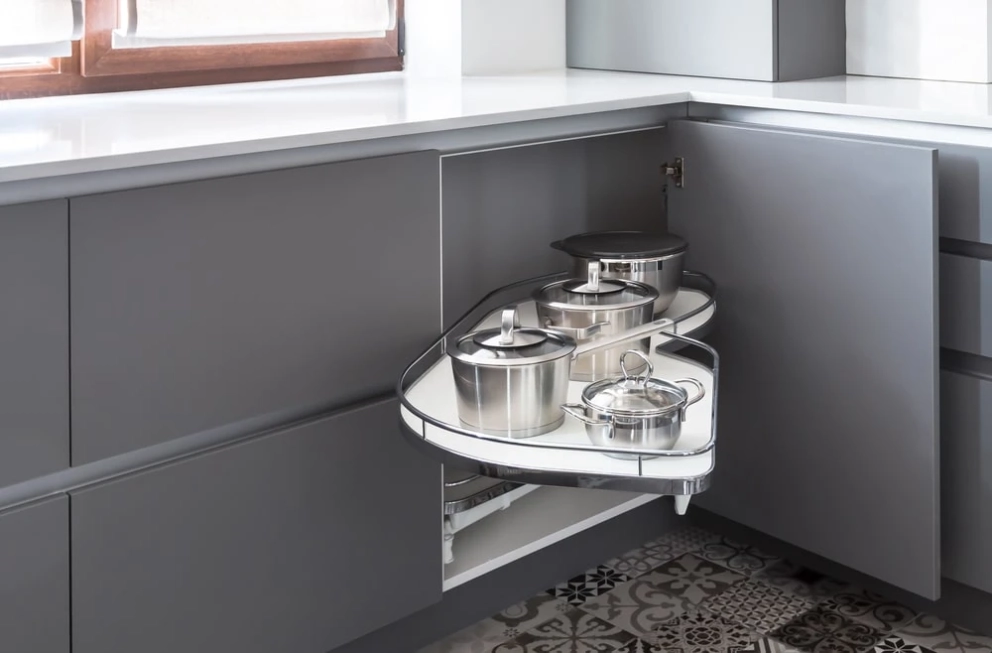
Organizing your kitchen with bottom cabinets only can be a game-changer! Here's a rundown to get those spaces in tip-top shape:
- Purge and sort. Start by taking everything out from your kitchen base cupboards - yes, everything! Sort through items, ditch what you don't use, and categorize the rest into groups like pots, pans, small appliances, or baking supplies.
- Group similar items. Once you've sorted, group similar items together. Use baskets, bins, or dividers to keep things tidy and easy to locate. Consider stacking pans or nesting bowls in your base cupboards in the kitchen to save space.
- Optimize vertical space. Install shelf risers or stacking shelves on your base kitchen cupboards to maximize vertical storage. This helps keep larger items like mixing bowls or large pots neatly arranged without cluttering the space.
- Utilize pull-outs and drawers. If you have pull-out shelves or drawers, designate them for heavier items like pots and pans. This makes access a breeze and prevents heavy lifting or straining.
- Invest in organizers. Explore various organizers - think pull-out baskets, lazy Susans, or sliding trays. They're fantastic for those deep, hard-to-reach corners, allowing easy access to items stored at the back.
- Cabinet door storage. Don't forget the cabinet doors! Mount hooks or racks to store lids, cutting boards, or frequently used utensils. It's a great way to use that extra space efficiently.
- Label, label, label! Consider labelling containers or shelves. It might seem minor, but it makes a world of difference when you're searching for that specific baking pan or a particular spice jar.
- Regular maintenance. Schedule occasional decluttering sessions to keep things organized. It's easy for chaos to sneak back in if left unchecked for too long.
Transforming your kitchen with well-organized base cabinets can make a world of difference in functionality and efficiency. Keep it uncluttered, utilize pull-outs and organizers and you can create a space that’s both practical and visually appealing. Take the time to optimize your bottom cabinets, and enjoy a kitchen that truly works for you!
